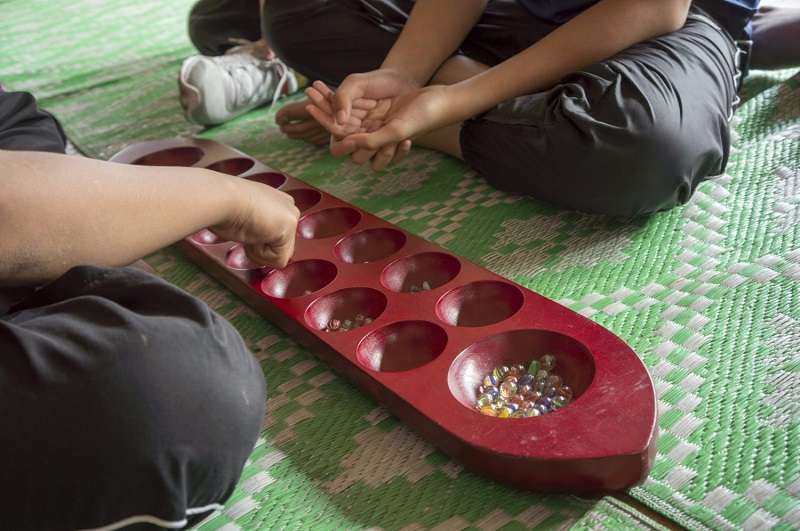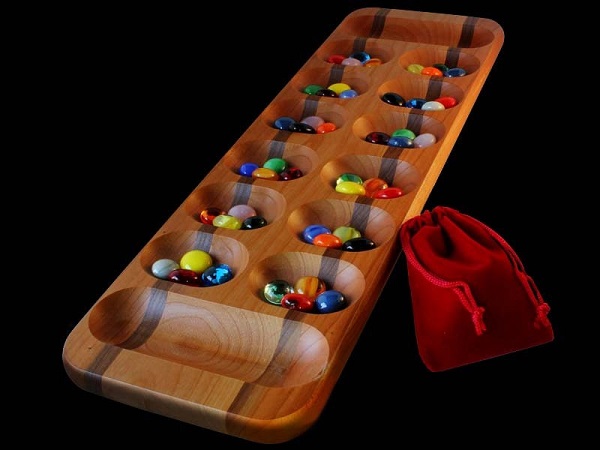Mancala, a game of strategy and skill, has stood the test of time, enchanting players across generations and cultures. This classic board game, known for its simple yet profound gameplay, offers a unique blend of tactical thinking and cultural heritage. Our comprehensive review explores Mancala’s rich history, gameplay mechanics, and strategic nuances, making it a must-read for both enthusiasts and newcomers to the game.
History of Mancala
Mancala’s origins can be traced back thousands of years, with evidence of the game found in various regions including Africa, the Middle East, and Asia. The game’s simplicity, requiring only a board with pits and small objects like seeds or stones, contributed to its widespread popularity and adaptability across different cultures.
Throughout history, Mancala has been known by various names and variations, each reflecting the cultural and regional influences of its players. It has been more than just a game; it has served as a social tool, a means of teaching mathematics and strategy, and a symbol of cultural identity.
Today, Mancala remains a beloved game, cherished not only for its entertainment value but also as a living artifact of human history and cultural diversity.
What Is Mancala?
Mancala refers to a family of board games played around the world, characterized by a set of small pits in a board where players capture, move, and count pieces, typically seeds or stones. The objective varies among different versions, but it generally involves collecting more pieces than the opponent.
Mancala games are often lauded for their educational value, promoting skills like counting, planning, and tactical thinking. The simplicity of the game’s equipment makes it easily accessible to people of all ages and backgrounds.
Rules: How to Play and Win at Mancala
The basic version of Mancala involves a board with two rows of pits and a set of seeds or stones. Players take turns picking up all the pieces from one of their pits and “sowing” them one by one into subsequent pits, including their own Mancala (scoring pit) but not their opponent’s.
If the last piece lands in an empty pit on the player’s side, they capture that piece along with any pieces in the opposite pit. The game ends when one player’s side of the board is empty, and the player with the most pieces in their Mancala wins.
Strategies for winning include planning several moves ahead, anticipating your opponent’s moves, and controlling more pits on the board.
Advice and Tricks for Winning at Mancala
- Focus on controlling the board by making moves that will allow you to capture more pieces.
- Pay attention to your opponent’s moves and try to anticipate their strategy to counteract them effectively.
- Utilize the empty pit capture rule to your advantage by setting traps for your opponent.
- Balancing offense and defense is key. While capturing is important, you must also protect your own pieces from being captured.
- Practice different strategies and familiarize yourself with various game scenarios to enhance your gameplay.

The Social and Cultural Significance of Mancala
Mancala is more than a game; it’s a cultural bridge that connects people across the globe. It is often played in social settings, fostering community bonds and friendly competition. In many cultures, Mancala is used as an educational tool to teach arithmetic and strategic thinking skills to children.
The game’s universal appeal lies in its ability to transcend language and cultural barriers, offering a shared experience that is both enjoyable and intellectually stimulating.
Conclusion: Is Mancala Worth Your Attention?
In conclusion, Mancala is a game that deserves attention not only for its engaging gameplay but also for its rich cultural heritage. Whether you are looking for a strategic challenge, a tool for education, or a way to connect with others, Mancala offers all these and more. Its enduring popularity is a testament to its timeless appeal, making it a worthy addition to any game enthusiast’s collection.

